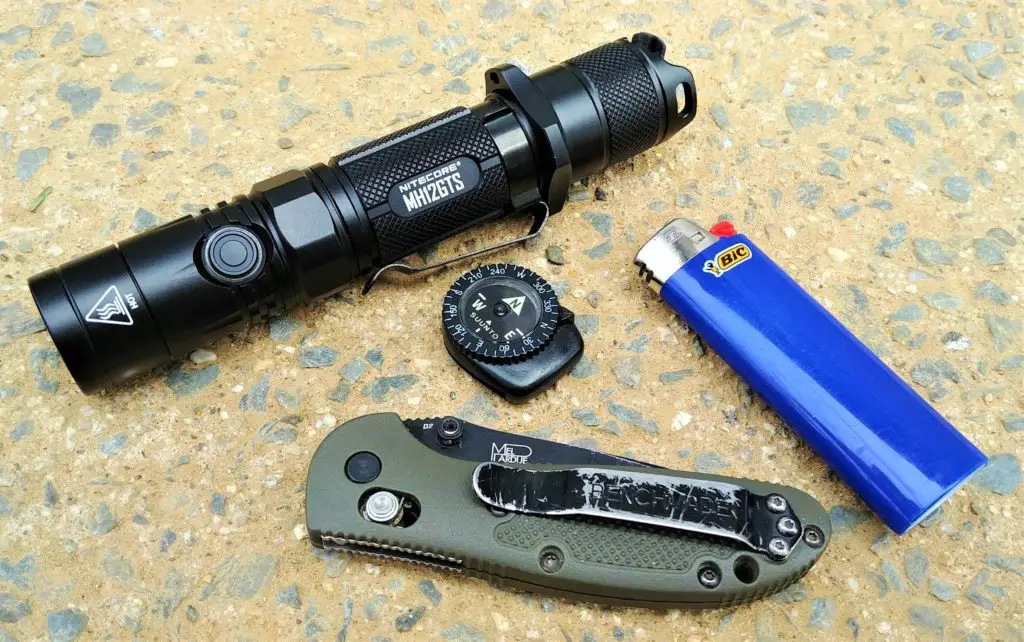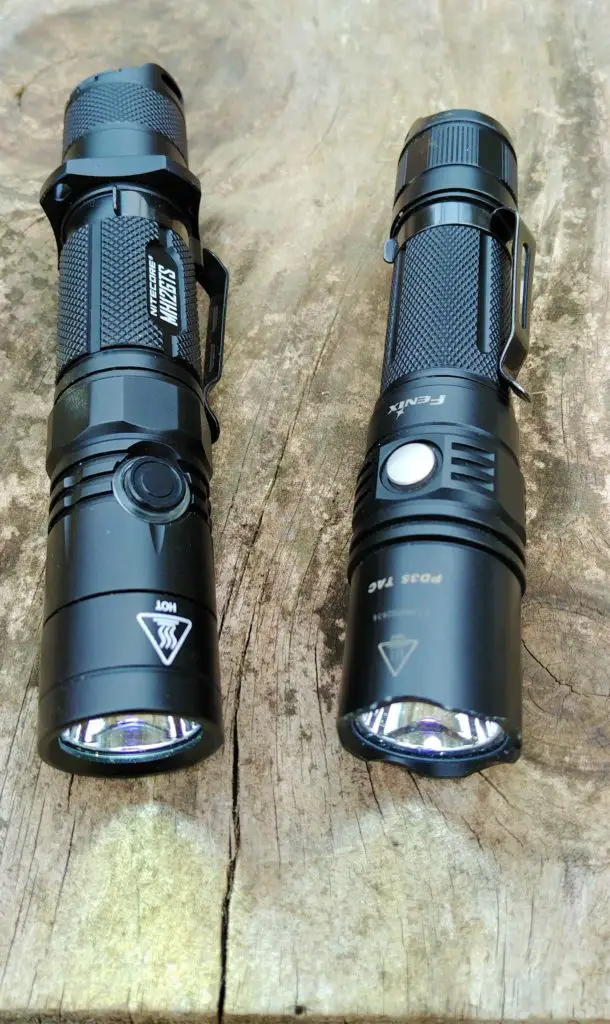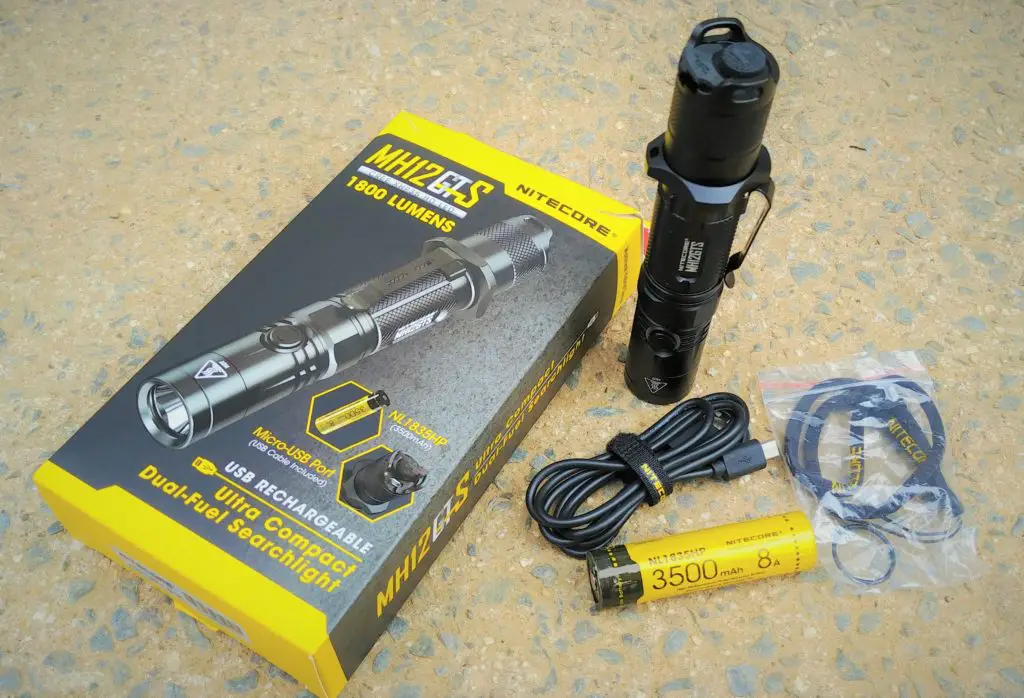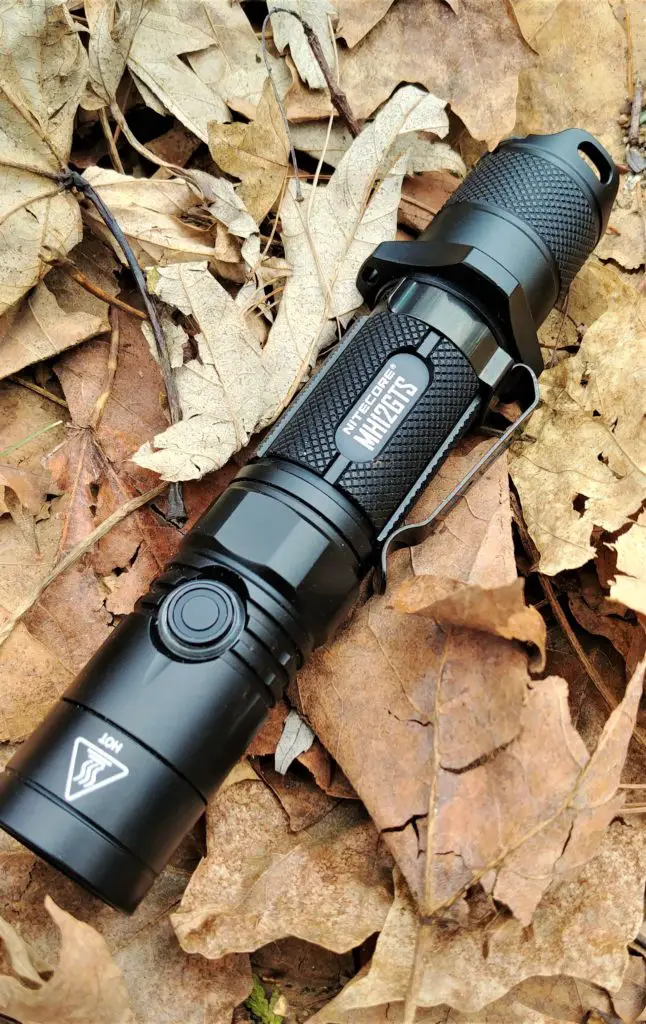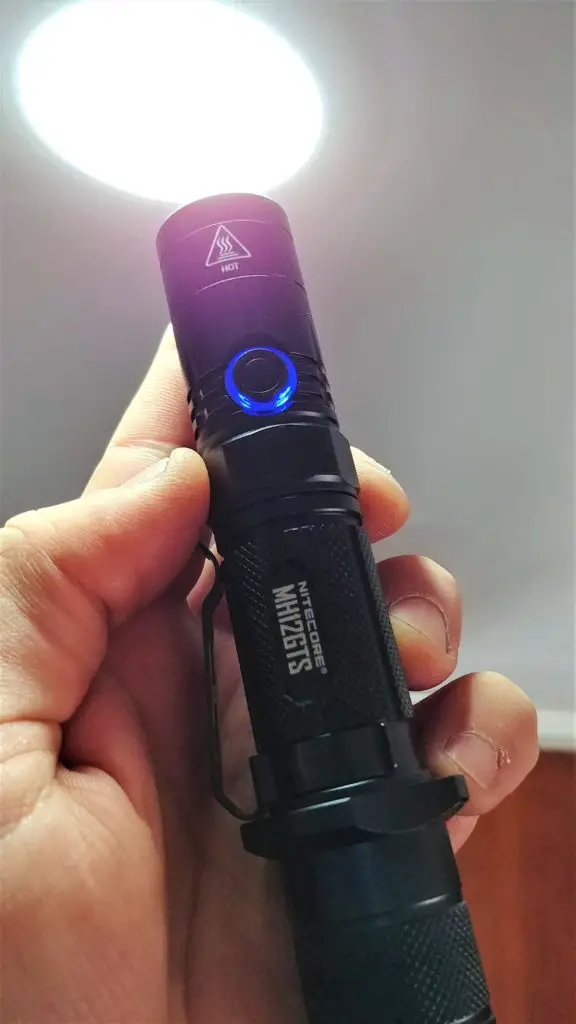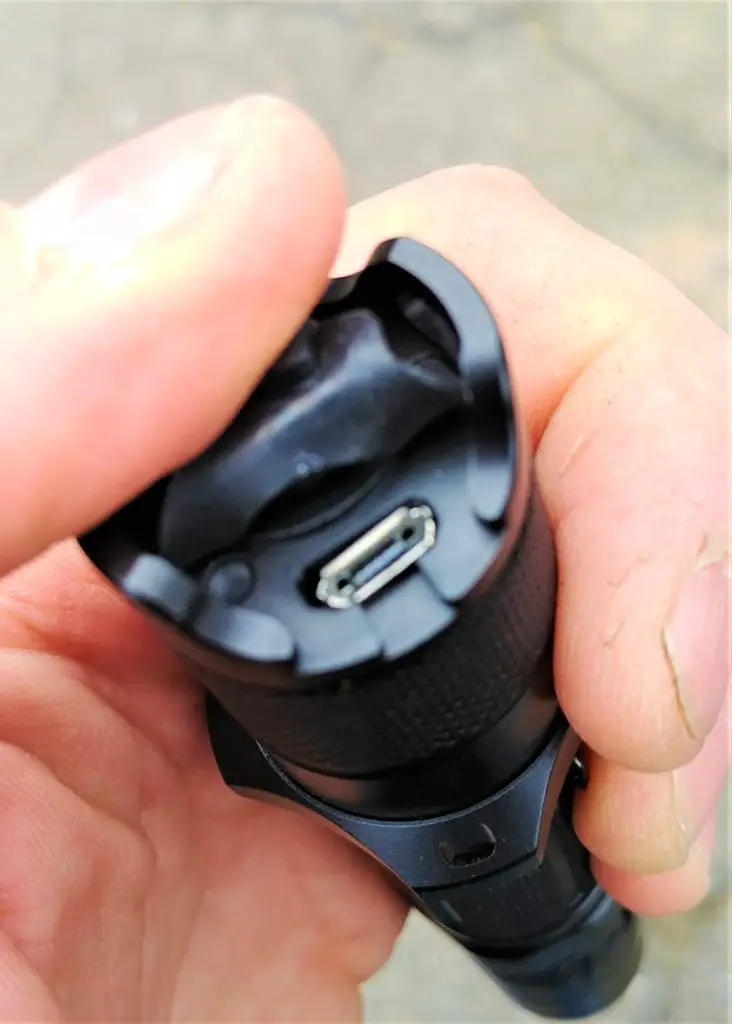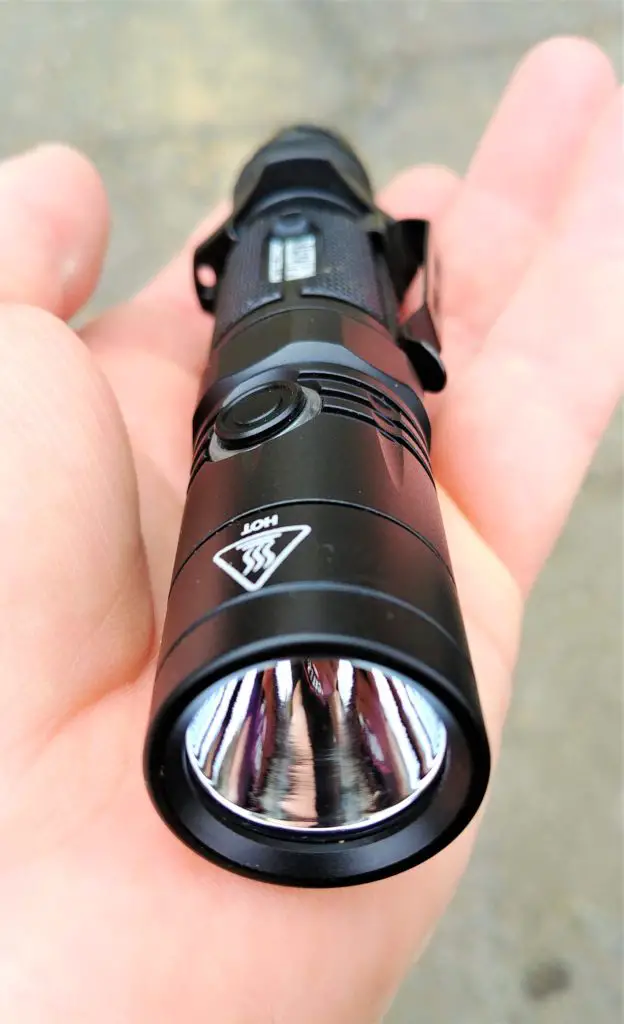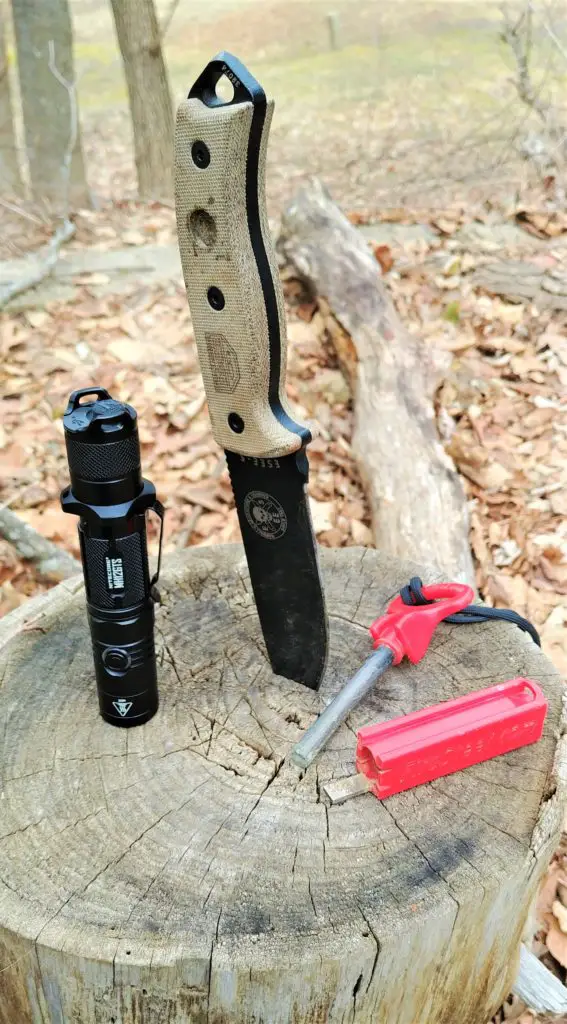In case you’ve been living under a bridge or in an underground bunker for the past five to ten years, flashlight and other illumination technology has been advancing like a blitzkrieging Panzer division in early WWII – swiftly and aggressively. I’m likely dating myself here, but it seems like just a couple yesterdays ago that the Maglite Heavy-Duty Incandescent 4-Cell D Flashlight, Black I had under the seat of my Oldsmobile station wagon was the best light a man could possibly ask for. A sweet little red anodized AA-powered Mini-Maglite rode in a nylon belt pouch whenever I ventured outdoors. If I needed to pierce the nighttime darkness to find a wily piece of hardwood for a cooking fire, or sweep the back lawn after the sun went down to identify the reason the dog was barking, well, I had the world by the cojones.
But time marches on, and the inexorable thirst for illumination progress and improvement is relentless. I remember the first time I visited a friend – who was a West Virginia State Trooper at the time – and he showed me his Streamlight Stinger rechargeable duty light. Properly impressed by how promptly obsolete my Mag-Lite had become, I used my employee discount at the gun shop I worked at and bought my very own Streamlight Scion rechargeable, and relegated my Maglites to perform neglected sentry duty – rolling around junk drawers and tackle boxes with corroding batteries and fading memories. That Streamlight served many years as my primary light with outstanding success, but its incandescent bulb simply became outdated one day.
I don’t remember my first LED flashlight – but I remember being blown away by the power-sipping bulb with incredible, stark-white output. I’ve had a slew of LED lights since – from gas-station cheapies to torches that only come into your possession after making a startling number of dead presidents fly out of your wallet – and indeed, quality varies wildly. Generally, I have found that the more feature-encrusted the light has been, the more susceptible the light has been to failure of sorts. Multiple bulbs for “extra output” fizzled out. Multi-function switches decided to become uni-function (read: “off only”) switches. Circuitry failed and grounds corroded, leaving dim or just plain drained, inoperable lights – turning flashlights into just a convenient tubular encasement to hold your spare dead batteries.
It wasn’t up until really the past couple-three years that – in my experience – there have been really good lights produced that are feature-rich, boast incredible performance (1,000 lumens plus), and land under the $100.00 mark. My first real high-performance light was a No products found.. This workhorse of an EDC light introduced me to affordable modern illumination with reliable variable power output, rugged construction, and moderate cost. Though not without flaws, it has been a personal benchmark for my opinion on how a modern (as of May, 2019) flashlight should perform.
But none of these lights is what this article is about; they merely show a traveled pathway to feature-laden flashlight greatness…and here it is.
SKIP AHEAD
Enter Nitecore
Enter the Nitecore MH12GTS – a feature-crammed powerhouse of a flashlight – a light whose best feature arguably is the price tag that just squeaks in under the $100.00 mark; there is a killer performance:dollar ratio happening with the MH12GTS. Let’s take a look.
The MH12GTS falls in the lower- middle of the size and power spectrum of Nitecore’s versatile MH (Multitask Hybrid) lineup of flashlights – a vast series of flashlights that covers a lot of ground in the flashlight world’s capability department, while offering the utility of being rechargeable via USB port to save the cost and hassle of frequent battery replacements.
The first time you hold the MH12GTS in your hand, the immediate physical attributes you recognize are its length of just a hair over 5 ½ inches (5.66 inches if you’re feeling particularly meticulous), width of one inch, and not-featherlight yet not-cumbersome weight of about 4 ounces with all the accessories on it. The knurling is finely machined, and the tough black anodized finish is attractive and purposeful. The tailcap power switch is protected by two sturdy outcroppings, both of which offer a lanyard hole. However, to me, the overall first impression is that appearance-wise, the MH12GTS is very similar to other comparable flashlights of the same price range.
The Devil (Isn’t) in the Details
We’ll investigate the included accessories first. I’d like to draw your attention towards a host of excellent accoutrements that are all included with the light, all are removable, and can be added or subtracted to enhance the user’s MH12GTS experience.
The removable pocket clip is black steel, and sturdy. The tension is substantial once installed, and ensures the MH12GTS rides in your pocket happier than a chihuahua in Paris Hilton’s purse. Unlike clips from other light manufacturers, this clip did not have an annoying propensity to launch off into parts unknown when drawing the light from a front pants pocket. Retention on the flashlight is positive and appreciated.
The “tactical ring” is an anodized aluminum ring with curved notches machined into its outer ring, and the ring can thread onto the light’s body once the tailcap is removed. The tactical ring provides a couple of functions such as increasing traction on your gripping hand and providing finger-grip area for a plunger hold when using in conjunction with a sidearm – but I found it handiest to just keep the flashlight from rolling away when placed on a flat surface.
The lanyard is a simple – though certainly not immensely sturdy – affair that attaches to the tailcap of the MH12GTS, but is a splendid inclusion to the package – being able to provide extra security by way of keeping your light physically attached to your wrist can be a Godsend if used around water, steep elevations, or moonless nights, where if you drop your light without it on, you may be relegated to a long evening crawling on your knees, blindly probing the ground and swearing.
The belt-mounted holster is a decently-made unit, constructed of nylon with a flap that folds over the top of the ensconced flashlight and keeps things riding securely by way of a hook and loop panel. It’s a great way to keep the light on your body or pack if you don’t like having lots of gear in you pockets – and the MH12GTS is kinda right on the hairy edge of being a bit too big for EDC pocket carry, in my opinion – so the option to belt carry is welcomed.
An extra rubber O-ring for sealing the light’s tailcap and a rechargeable NL1835HP 3500 mAH battery round out the suite of included accessories.
As far as the light proper goes, once you start turning the flashlight over in your hands and analyzing the design that derived the MH12GTS, however, you start to notice a couple deviations from your run-of-the-mill tactical-type lights. And these physical deviations are well thought out with excellent execution.
The tailcap has grown two protective ears that keep the rubber “N”-embossed power button from being engaged unintentionally, turning the light on and depleting the battery or announcing your presence blatantly in a dark environment. However, these tailcap ears allow the MH12GTS to tailstand (stand up vertically on a flat surface) and illuminate a room by shining at a white ceiling, brighten the underside of your BOV to repair a cracked oil pan on a trail, or draw attention to the area via the beacon flash function. Many lights that appear similar to the MH12GTS offer the protection of the metal ears on the tailcap, but they are not designed with enough forethought to allow the light to tailstand on its own. This dereliction of design duty is a severe pain in the posterior on occasion when you just simply need the light to stand at attention while powered on. The tailcap’s rubber power button allows momentary illumination by tapping the switch; a full depression of the switch results in an auditory “click” and the light stays on until you turn it off or the battery runs out of juice. The tailcap switch is also programmed to remember the last setting it was used at and start at the same output when powered on again.
The next detail that caught my eye was the side switch. A small circular switch, located on the side of the flashlight’s barrel about a quarter way aft from the lens, is made of metal to minimize damage that is sure to befall a worthy tool. This switch is a multi-function switch, and it stands proud of the contours of the flashlight – just enough to be positively tactile for use with gloves or cold hands, but not enough to be obtrusive. When compared to my Fenix PD35TAC, which offers a switch with similar placement and function but is flush with the flashlight sides, the Nitecore’s design is just slightly different enough to make a world of difference. Finding the button in the dark to adjust the light’s output by braille is a breeze, and hugely appreciated.
However, Nitecore didn’t stop with the tactile improvement; another step they took to ensure the operator could find the switch is simple yet literally brilliant – create an illuminated ring around the button so a quick glance will tell you where the switch is located. A blue light flashes around the perimeter of the switch only when the light is on, to guide your attention to the control. This illuminated ring also serves to display the current battery charge level, as well as the charging status. It’s a great setup, and well thought out to provide a great deal of information on the light’s status – though a thorough study of the owner’s manual is needed to decipher the pattern of flashes the MH12GTS communicates with.
Charge of the Light Brigade
That’s right; this flashlight is rechargeable, via a small micro USB port in the tailcap that is both waterproof in itself but also protected by an attached rubber plug. The MH12GTS is a dual-fuel light in that it can use a pair of standard CR123A batteries or a single 18650 Li-Ion battery – or you can, of course, use the included (and preferred) NL1835HP battery which offers in-light charging capability; this means you don’t need to remove the batteries from the light itself to recharge – simply open the USB port and plug it in. You’ll find that if you’re a fan of blasting out the incredibly high output this light offers, you’ll be charging this light up on semi-frequent occasion, though the No products found. offer an incredible amount of stored juice.
The ability to recharge the battery cell through the body of the light is a brilliant advantage for a torch that offers performance of this level; the peace of mind that comes with knowing the battery that powers your illumination is fully topped off when you head out the door cannot be overstated.
The in-house charging capabilities of the MH12GTS also means that as long as you have a solar panel or charged power bank with USB outputs, you can refill your battery in the field, while camping, hunting, or running from invading Communist forces Wolverine-style.
Hot Rod Flashlight
As stated above, the MH12GTS is a brutal power monster of a flashlight. While other, bulkier lights offer more sheer horsepower, the MH12GTS can offer 1,800 lumens of output for your illumination enjoyment. Advertised as capable of throwing a crowd-pleasing beam of hand-held light 226 meters (roughly 700 feet), the MH12GTS offers performance that is simply mind-boggling when compared to the old D-cell Maglites of my yesteryear.
While this amount of light certainly has its purposes, it generates a lot of heat and inhales power from the battery at an alarming rate: if you could run the 1,800 lumen “turbo” setting continuously, you’d drain the battery in about a half an hour. However, the light is programmed to knock the power output back after just a few minutes to minimize damaging heat build-up. Also, worthy of note is that the 1,800 lumen Turbo setting is only available with the proper batteries – Nitecore states that 18650 Li-ion battery of over 8v output will allow the turbo mode – CR123A batteries will only provide the lower 900 lumen setting.
Also read: Survival Gear Review – Surefire E2D and E1D Defender Flashlights
The Nitecore MH12GTS offers multiple power settings, selected from the round illuminated switch on the side of the light. The lowest power output is a mere 1 lumen output – handy for reading maps, close-in work in a stationary location, or providing that touch of extra brightness in low-light situations where you don’t want to blind yourself or passersby a block down the
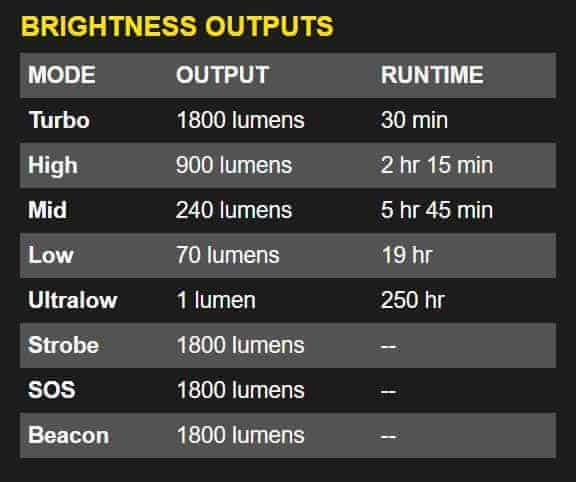
road. A quick series of taps on the side switch will ratchet the power output up accordingly to the next output levels of 70 lumens, 240 lumens, 900 lumens, then the scorching 1,800 lumen turbo setting. Obviously, the different levels of power use stored power at different rates. The 1 lumen setting will give you about 250 hours of use from a fully charged 3500 mAH 18650 battery; 70 lumens is rated for 19 hours, 240 lumens will last for just under 6 hours, and 900 hours will give you about two hours before the light calls it quits. Time may be money, but lumens is power and the harder you push the gas pedal on this hot rod, the more fuel it uses.
Along with the adjustable power output, the MH12GTS offers 1800-lumen strobe capability in several forms. With the light on, a quick double-tap of the side switch will bring the flashing into effect. The first flashing mode is a random-pattern strobe, used for the sheer purpose of confusing or disorienting a target, whether it be an intruder in your home or a fur-bearing predator in your camp at night. Next double-tap will yield you an S.O.S. beacon in morse code that repeats endlessly while the battery lasts; pair this with the tailstanding capability while lost at night and you can alert passing aircraft are anyone within eyeshot to your plight and hopefully draw rescue. The last flashing mode is a straightforward beacon, with the light flashing at a 4-second intervals to – like the S.O.S. – attract attention to the light’s location. I do really like the fact that the flashing settings require a different activation function than swapping power output; this ensures that if you need to tone down the light’s brightness, you don’t accidentally kick a strobe on. It’s a small, thought out detail that follows through the entire design of the light.
The light is, as any good light should be, IP rated – in this case, to 2 meters submersion depth. The double aluminum tube construction ensures that a one-meter drop will be shrugged off with ease, and the CREE XHP35HD LED bulb should have a lifetime of over 50,000 hours – which is, if you’re counting, about 5.7 years of continuous use.
The bezel is non-crenelated – meaning non-scalloped on the lens edge – just a flat edge. This is a two-edged sword – the light doesn’t have the flesh-gouging offensive capability a tactical crenelated bezel offers, which may make people in uniform friendlier in their general dispositions towards you if you’re stopped. However, leave the light powered on and set the light bezel-down upon a flat surface, and you might just forget the flashlight is on and draining batteries – and, depending on the output setting, you might be melting/scorching the surface the light is placed on…there’s some measure of heat generated by a light source of this power level, and one must be mindful even though the light is programmed to modulate output to keep heat down.
The Nitecore MH12GTS In Action
Over the period of a couple months, I put my standard EDC light in the drawer and carried the Nitecore light on my person practically every day. As I’ve mentioned, the light is a stellar piece of gear for many purposes – just small enough to be carried most anywhere in your front pants pocket. I brought the light on my carry-on luggage on a trans-border flight from Boston to Winnipeg – and the light didn’t garner a second TSA glance in either flying direction or either country. The light was innocuous enough that it wasn’t viewed as a threatening device – a nice feature for a light you carry every day.
I did decide to remove the Tactical Ring from the light when carrying it in my pocket, as the ring was a bit obtrusive and added girth and additional sharp edges for the light to catch or drag on and scrape – the ring did sit above the pocket line, though, so it didn’t intrude in the light’s retrieval process and catch on clothing when I needed to draw the light.
When the MH12GTS was seated in my pocket, I did find that the exposed portion of the light that stuck out of my pants – everything north of the pocket clip location – was a good ⅜” – ½” taller in profile than my Fenix PD35TAC. This isn’t the end of the world – either light is quite easy to spot jutting out of jeans pockets when carried with the clip – but that extra exposed area was noticeable, and the light definitely caught or banged on items I found myself in close proximity with on occasion. The pocket clip’s retention – both on the light itself and on the pocket fabric – was impressive and positive; the light was never extricated without a good honest fight. Taking off jackets – a sure-fire method for me to accidentally catch a pocket clip and produce an unintended empty pocket and lost flashlight – was never a hassle while I carried the MH12GTS without the Tactical Ring. When I purposely “caught” the clip with cloth or a finger and tried to tug laterally in an attempt to spring the pocket clip off the flashlight, the clip stayed put and snapped back without bending. Kudos to Nitecore for a solid clip design.
I found that the Nitecore was immensely powerful, and up to every lighting task I needed. The MH12GTS performed brilliant service when talking my dog for a walk at night, going out camping and letting my 5-year-old use the light, or finding my way around the house during a power outage. I found myself keeping the light at either 70 lumen or 250 lumen levels probably 90% of the time – the only time I really used the 1,800-lumen Turbo mode (other than to wow friends) was to illuminate a far shore while overnight camping on the shore of a lake – the added horsepower really stood out in this application. But really, with every day use, you’ll find that the lower power levels are really more useful – and don’t inadvertently blind you if you accidentally wave your bare hand or a sheet of white paper in front of the light while using it. I will say, my experience was 100% positive with the Nitecore MH12GTS – it always worked, and its USB charging capability was superb and appreciated. I put the light through the rigors of every day carry, and it came up a real winner.
I will admit that most of my time with the MH12GTS was mundane suburban daily use – light up under a desk when I dropped a pen, look under a car to investigate odd drivetrain noises, that sort of thing. So I gave the light to my brother, who works at a rural working farm/zoo in central Maine, to try out. Eradicating rats, rodents, and coyotes at night is part of what he does around the place, along with tending to lions, bears, wolves, etc. His daily routine is much more rigorous than mine, and so he gave the light a real workout with a perspective I couldn’t provide. After a few weeks of using the flashlight daily, he reported back via text message:
“First of all, the light is insanely bright. Just playing with it in the house, [my wife] threatened to hide it because it was so bright! It seems to hold a charge a while. My biggest complaint is the size. I think it’s a little big for EDC, but maybe it’s because I wasn’t used to carrying one on a regular basis. I do find that if you slip it in a pants side pocket like this [he sent a picture of the side pocket of a pair of Carhartts], you pretty much forget it’s there. Overall I love the thing and it’s been very reliable.”
“Going outside at night and using it on full blast, it is truly amazing how much light it has.”
I ended up leaving the light with him, since he enjoyed the MH12GTS’s performance so much more than his normally-used AA mini-maglite. I really kinda want it back now.
Wrapping it up
The Nitecore MH12GTS is really an excellent light for those who need serious illumination on a daily basis. The light’s reliable operation, ease of use (after perusing the instruction manual), and varying levels of output make the light a superb choice for outdoorsmen, preppers, campers, or just every day people going about their lives. While the circuitry required to load a light up with this level of useful features is probably less than EMP-proof, I have no doubts that this light will serve those looking for a moderately priced, option-laden flashlight very well indeed. The MH12GTS is a splendid gateway light to the wonderful world of high performance lights, and is a worthy LED upgrade to your aging arsenal on incandescence.
Now, to go see if my brother will give it back…


